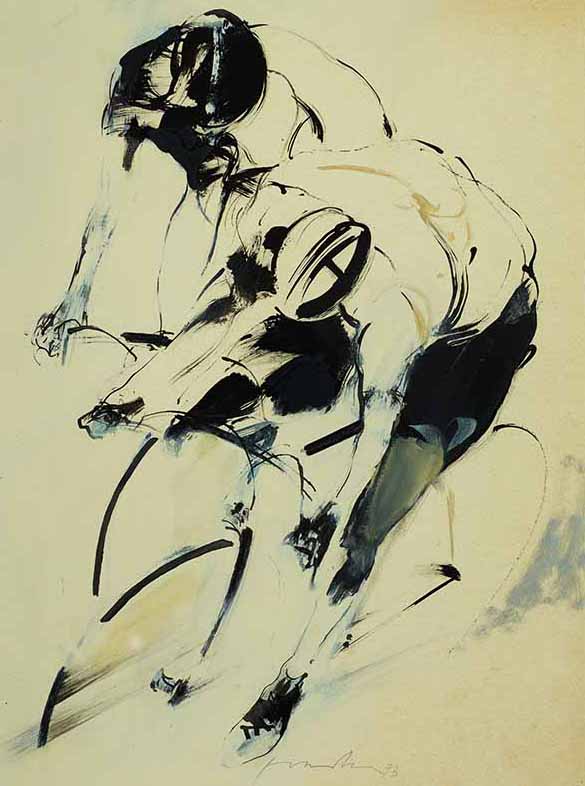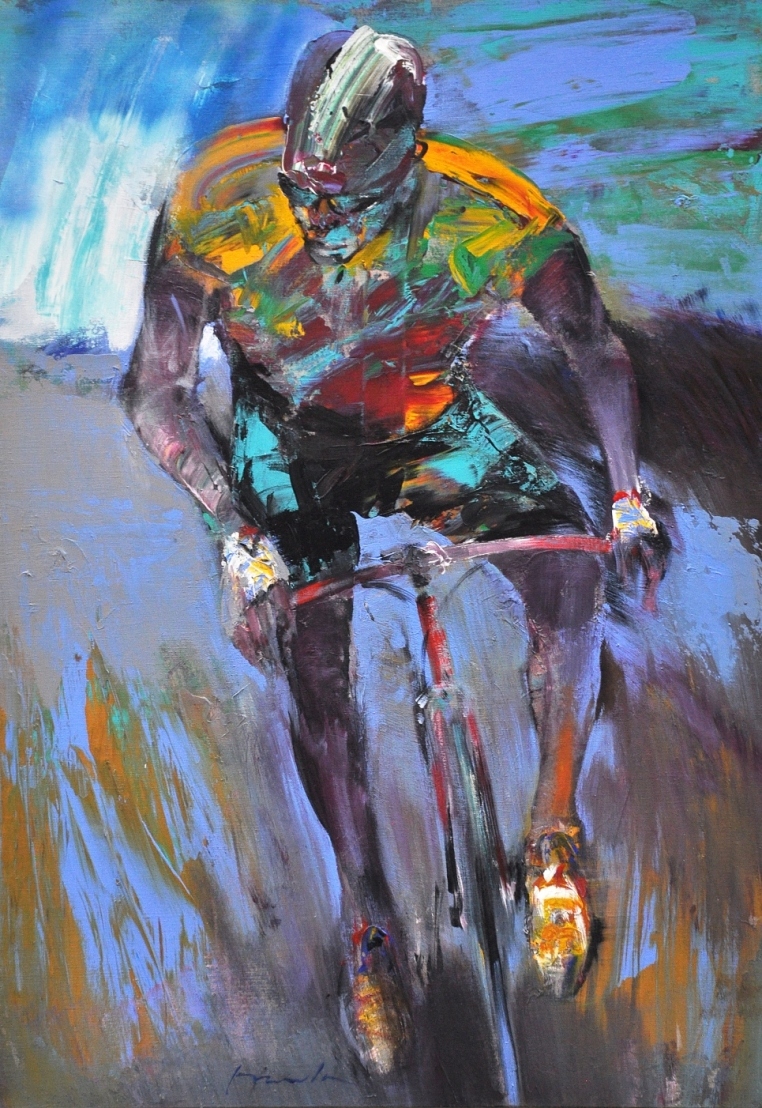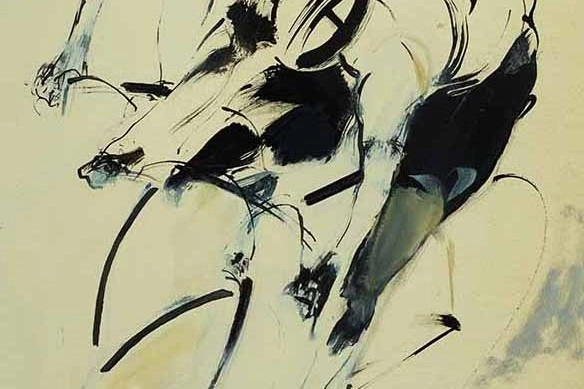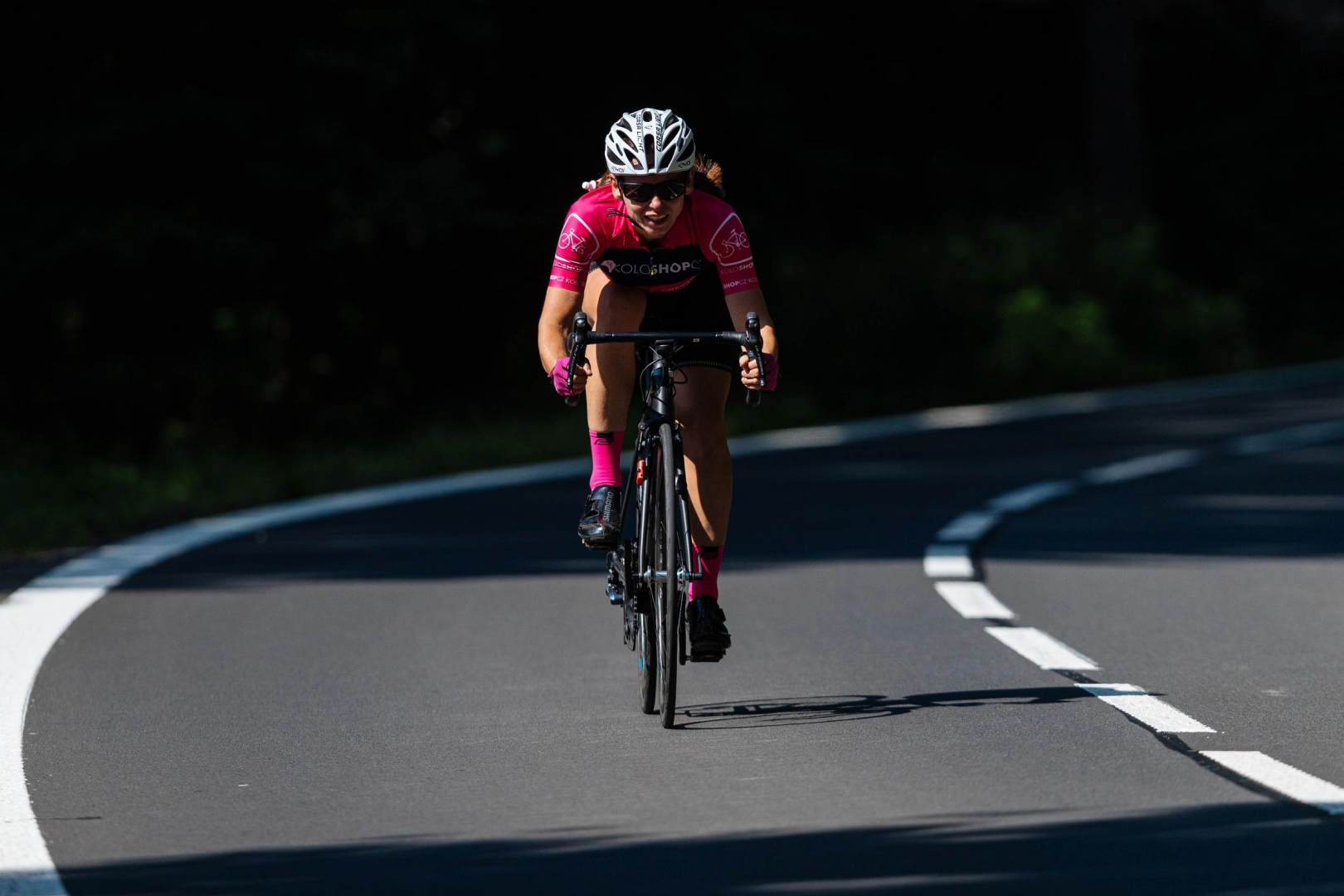Ninety-two-year-old Franta, or František Mertl, has been living in France since 1958. He is a world-renowned artist whose works are included not only in collections across Europe but also in the Americas and Asia. Franta is primarily a painter and a sculptor, whose main interest lies in the human figure and the possibilities of expression through its artistic depiction. Art was his first passion and cycling comes close second, following him with the same intensity and longevity - a life rotating around the bicycle wheel. It is fascinating to observe how these constants intersect in the artist’s life and influence one another. What connects painting and cycling?
First bicycle, growing interest in cycling and studying art
František got his first bicycle from his uncle when he was five. As a young man, he then became intensely drawn to cycling, he even considered competing in the race between Prague-Berlin-Warsaw. However, at 16 he suffered a serious injury when he broke both his clavicles. His parents forbade him from racing and sold the bike. But who knows, maybe without the injury Czechoslovak cycling history could boast another champion. On the other hand, it is unlikely that František would’ve been able to fully focus both on cycling and art, which he decided to pursue.
At twenty-two, he joined Miloslav Holý’s atelier of painting at the Prague Academy of Fine Art. The six years he spent at the school gave him direction and remained a strong influence for the rest of his life. In Holý’s atelier, František became acquainted with the craft and became familiar with proportion and anatomy which form the foundation of his work. Even then, he was already drawn to depicting human figures in motion. Purely based on his own interest he drew cyclists at the velodrome but when he brought his works to school he was not met with understanding from his teachers. The topic of his paintings was not following the conventions of socialist realism. However, in 1956, thanks to Miloslav Holý, František managed to attend a study trip to Perugia in Italy where he met his future wife Jacqueline. This meeting decided his emigration to France., he left in 1958 after the government denied his appeal to live with Jacqueline in Czechoslovakia.

Life on Côte d'Azur, making art and the stolen bicycle
František Mertl first went to Nice, where Jacqueline was studying, and then they moved to the picturesque city of Vence on the Côte d'Azur. Mertl built his first road bike himself right after arriving in France, and as he says, he assembled it from scraps found in a junkyard. It must have been a good-looking bicycle because it was stolen quite soon after and so František decided to purchase the next one. Thanks to its geography and climate, the coastal city of Vence has been made for cycling. It offers flat roads and steep climbs into the mountains with grand vistas into the valley as a reward for reaching the peak. Even in winter, the climate is mild and so Franta (as he has been calling himself since the early 60s’) managed to ride around ten thousand kilometres every year. The last time you could have been able to see him around Vence on his bicycle, though, was in 2019 when he decided to quit cycling at eighty-nine years of age. His elegant blue road bike De Rosa, which he bought from Ján Svorada, then passed on to his granddaughter.
.jpg)
Franta started making art right after he arrived in France. His work is usually classified as part of the European “new figuration” movement. At the beginning of his career, Franta certainly did not have it easy, because France in the sixties strongly favoured abstract artistic tendencies. Gallery owners and critics were, however, intrigued by Franta’s work despite the fact he never gave up on figural painting. The human figure becomes an aesthetic self-sign in his art, without losing contact with the real world. Franta uses depictions of the human body to capture the basic roster of human emotions, their meaning reaching beyond the individual and his works, among others, become a medium for collective memory through their numerous references to problematic narratives of European thought and history (such as motifs linked to slavery, loss of home and displacement of Africans). Simultaneously his works also serve as a medium for individual theory as each spectator may find themself in the depiction of the collective human archetypes and universal existential situations. When observing his paintings, we arrive at the understanding that as people of different races and ethnicities we have much more in common than we may think. Growth, successful life, or stagnation and failure are existential determinants we all share.

Experiencing crisis – on a bicycle and in front of the white canvas
Although the term crisis is overused in recent years, especially in the economic and political context, and viewed mostly negatively, Franta sees it in connection to his work in a positive light.
For him, a crisis represents a possibility of creative growth - it is sort of a trial of the physical and mental powers of human-artist. It aids in the discovery of options which may not have been visible before the beginning of the creative process. Franta describes the analogy between painting and riding a bike: “When one rides a bicycle, it is a kind of desire to shake the box and know that there is still some energy in there. It’s the same with a canvas.” (source: Czech Television, document Franta, 2010). If we have enough energy, determination and bravery, then the crisis won't hurt us but instead, develop our talent. For that, though, we need to respect the “environment” in which we find ourselves. A cyclist has respect for the hill and a painter for the canvas. We can draw a lesson from this: one should continually desire to find themselves in a crisis and try not to avoid it if they are aiming to carry out something important. František Mertl, or Franta, has been following this creed for his entire life.
.jpg)
František Mertl, also known as Franta (⃰ 1930, Třebíč) studied at the Academy of Fine Arts in Prague in the years 1952 – 1958 in the atelier of Professor Holý. In 1958 he emigrated to southern France. All his life he devoted himself mainly to painting, drawing and sculpture and his interest in humanity and its turbulent fate. Franta's work Eden (1985) is part of the collection of the Guggenheim Museum in New York. His lifelong hobby and passion is cycling, which he currently enjoys passively by watching television broadcasts of cycling races.





